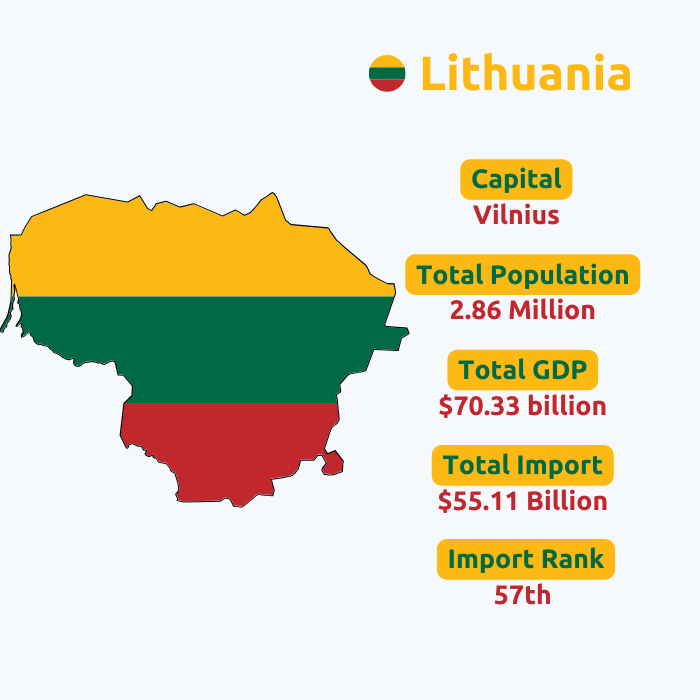
Lithuania’s main trading countries
Lithuania, a member of the European Union (EU) and a vital part of the Baltic region, engages in robust international trade. Its strategic geographical location, developed infrastructure, and membership in various trade agreements make it a significant player in global commerce. Lithuania’s economy is highly open, with exports and imports constituting a significant portion of its GDP. Below is an overview of Lithuania’s main trading countries and their economic relations.
Main Trading Partners in Exports
1. Germany: As one of Lithuania’s largest trading partners, Germany is a significant destination for Lithuanian exports. Lithuania exports machinery, equipment, furniture, textiles, and agricultural products like wheat and dairy to Germany. The economic ties between the two countries are reinforced by Germany’s position as an industrial powerhouse and Lithuania’s high-quality manufacturing sectors.
2. Poland: Sharing a border and strong historical ties, Poland is a vital export destination for Lithuania. The trade relationship is bolstered by the transportation of goods like petroleum products, agricultural commodities, and construction materials.
3. Latvia: As a neighboring Baltic country, Latvia is a critical trading partner for Lithuania. The countries engage in significant trade of food products, chemical goods, and manufactured items. Strong cultural and logistical connections also facilitate smooth trade relations.
4. The Netherlands: Lithuania exports various goods, including refined petroleum, chemicals, and agricultural products, to the Netherlands. The Netherlands serves as a gateway to other European markets, increasing its importance in Lithuanian trade.
5. Russia: Historically, Russia was a major trading partner, but its share in Lithuanian trade has decreased due to geopolitical tensions and sanctions. However, certain sectors, such as energy and food products, still see some trade activity.
Main Trading Partners in Imports
1. Germany: Germany also plays a pivotal role in Lithuania’s imports. Lithuania imports vehicles, industrial machinery, electronics, and pharmaceuticals from Germany. This balanced trade relationship reflects mutual economic dependence.
2. Poland: Lithuania imports substantial quantities of food products, consumer goods, and raw materials from Poland. The shared border facilitates seamless trade operations.
3. China: China’s importance as a trading partner for Lithuania has grown in recent years. Lithuania imports electronics, machinery, and consumer products from China. Despite occasional diplomatic challenges, the trade relationship continues to expand.
4. Latvia: In addition to being an export partner, Latvia supplies Lithuania with timber, electricity, and other essential goods. The proximity and shared infrastructure play a significant role in this trade relationship.
5. Russia: While political tensions have influenced trade volumes, Lithuania still imports certain goods like mineral fuels and raw materials from Russia, though these imports have been reduced due to sanctions and energy diversification efforts.
Other Notable Partners
Scandinavian Countries: Sweden, Finland, and Denmark are crucial partners, especially in the areas of technology, telecommunications, and finance. Lithuanian exports of IT services and wood products find significant markets in these countries.
United States: Lithuania exports niche products like lasers and high-tech equipment to the U.S. and imports machinery, technology, and agricultural goods.
United Kingdom: Post-Brexit, Lithuania has maintained strong trade ties with the UK, particularly in furniture and textiles.
Summary
Lithuania’s trade landscape is characterized by a strong focus on European countries, reflecting its geographical location and EU membership. While neighboring nations like Germany, Poland, and Latvia dominate trade, Lithuania’s global outlook includes significant partnerships with China, the U.S., and Scandinavian countries. Political and economic stability, coupled with Lithuania’s strategic location, ensure its continuing role as a vital trading hub in the region.





Leave a Reply